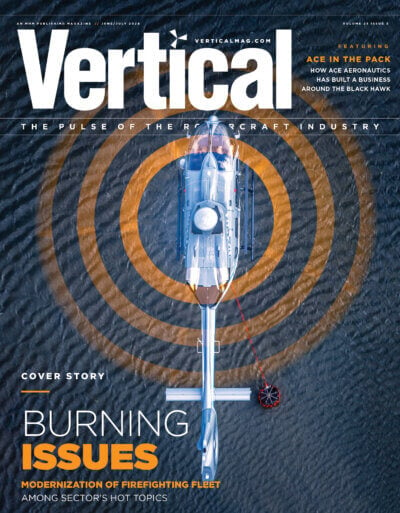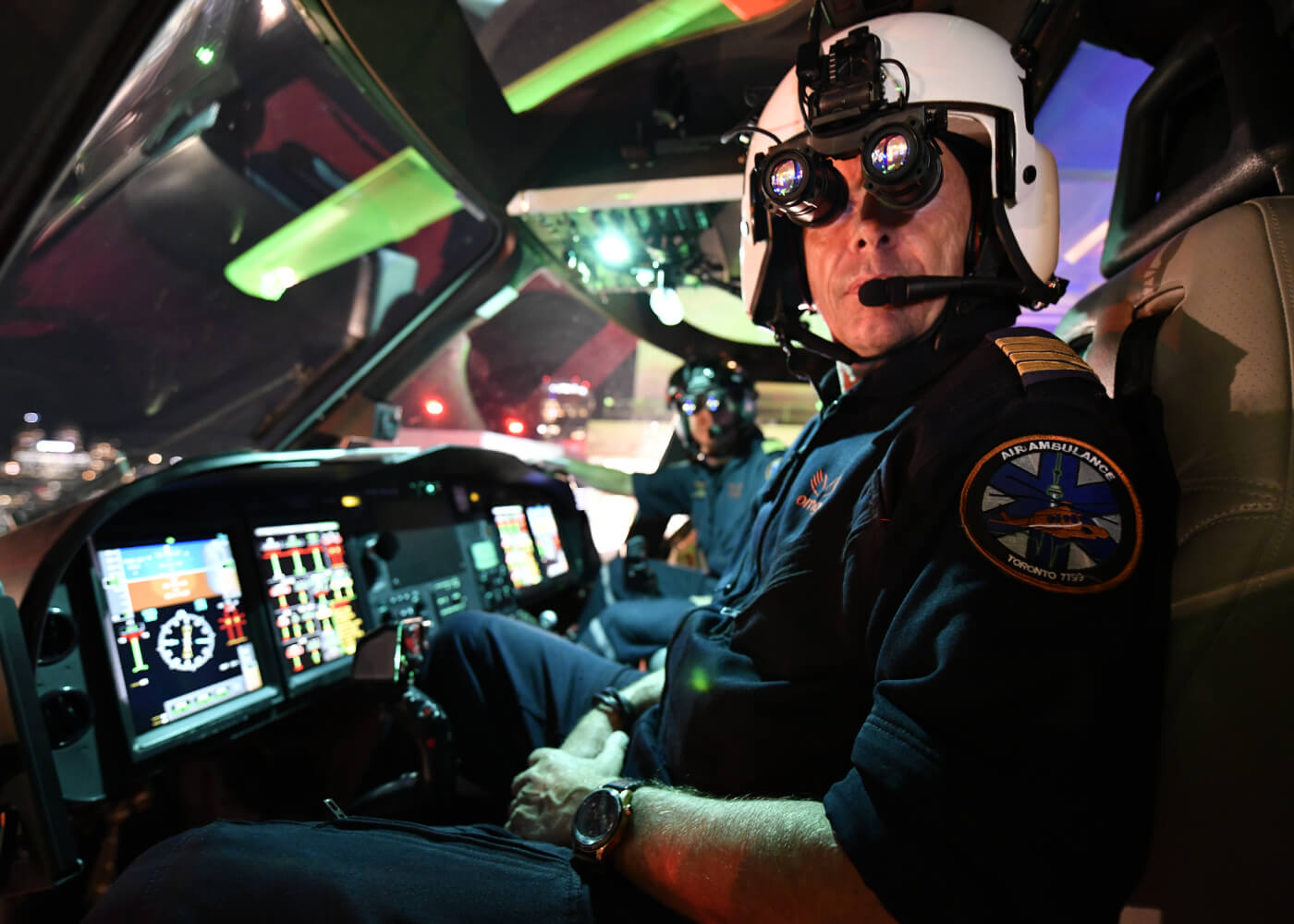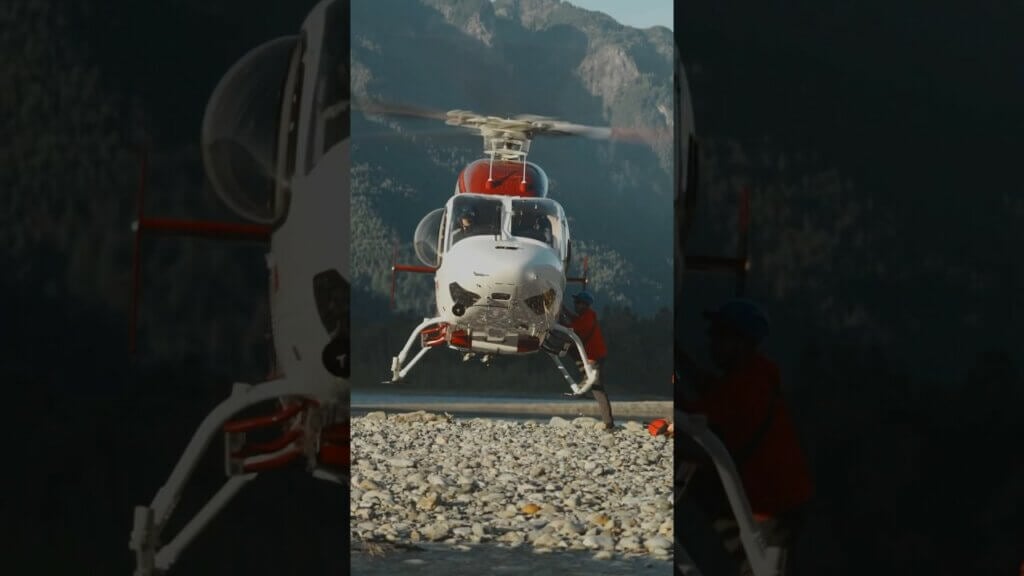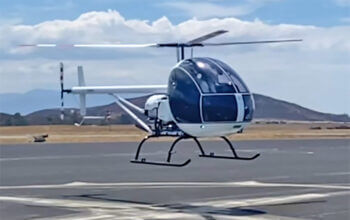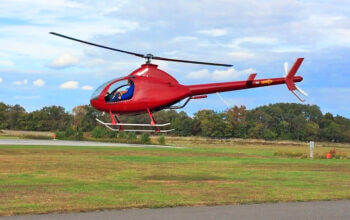The green (or white) glow is familiar to many of us, especially if you have flown a helicopter at night in a military environment. But why is the use of night vision goggles (NVGs), and especially night head-up (HUD) displays, still limited?
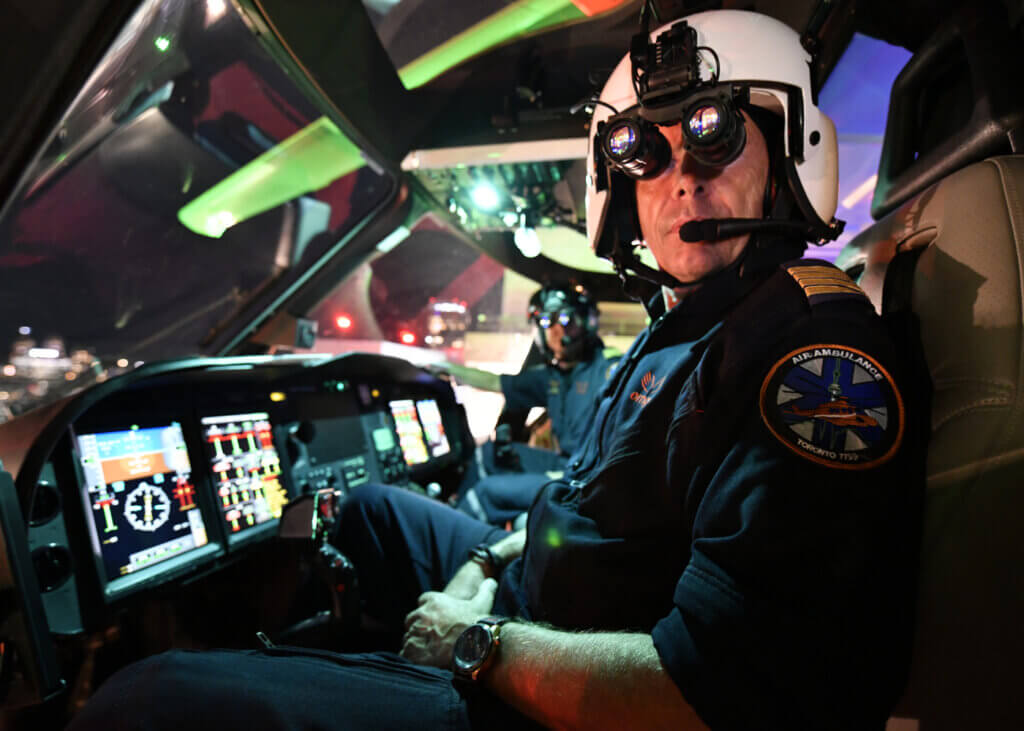
Surprisingly, the history of night vision devices goes back to just before World War II when Germany developed primitive infrared devices and the Allies followed suit with generation zero technologies amplifying ambient light by about 1,000 times. But these were large and cumbersome devices that needed infrared searchlights and truck mounting to be effective.
Developed through the Cold War, the first viable wearable devices came in the late 1970s. By the first Gulf War in the early 1990s, they were being widely used on military helicopters, and in 1999, became first certified for civil use.
NVGs have revolutionized the way helicopter operations are conducted in low light and night conditions, allowing pilots to see terrain, obstacles, and other aircraft with increased clarity and safety. From a civil perspective, they have emerged as an essential element for emergency services and law enforcement roles but are not widely used beyond this — more so if you also use night HUD display devices, which can be added to an NVG installation.
Flying with NVGs isn’t just a matter of fitting it to your helmet and magically being able to see the world clearly at night. There is a myriad of considerations before you even walk out to the aircraft. The first of these is the aircraft itself where all of the interior lighting, display screens, and systems must be made NVG-compatible — a task that was originally accomplished on older aircraft by turning off the normal lighting and adding NVG floodlights.
But modern glass cockpits and LED lighting have created much better solutions to the problem, although you have to be careful not to mix up your NVG “friendly” and “compatible” definitions here (a different but interesting story). Cockpit modification obviously creates a barrier for many legacy aircraft operators since the modification incurs additional costs, results in aircraft downtime, and requires specialist design organization support and certification.
The next consideration is pilot training and unless you have a steady stream of ex-military pilots to call on, this is something you shouldn’t treat lightly. The problem with NVGs is while they give you a new green (or sometimes white) view of the world, it is not the same view you get during the day and is certainly complicated by what you see below and around the outside of the goggles. The way you look at the world is markedly different and the complications fall into three distinct areas
Depth perception
Its a physiological fact that your brain relies on the way your eyes work and the distance between them to assess depth. Using NVGs effectively eliminates that innate human skill of binocular vision, which you can easily demonstrate by covering one eye and then trying to pick something up.
As a result, when using NVGs, you have to use your brain more to work out where things are, what might be in the way, and heights or distances. Cross checking with instruments and displays helps here, as well as crew resource management (CRM) through verbal guidance.
Field of view (FOV)
Night vision devices typically have a limited FOV. The commonly used ANVIS-9 has an FOV of 40 degrees, which is rather less than the 95-degree monocular horizontal FOV and 190-degree binocular horizontal FOV that humans possess.
As a result, to get an effective view of the outside world, you have to move your head much more than you might think in order to get the cues you need to fly accurately in the low-speed environment. While wider FOV goggles are available, their sale is quite restricted and they are not readily available to civil users.
Visual acuity
Although this has improved over time, there is a limit as to how the NVG image intensifier elements present the outside view. Typically, this can be seen as a “grainy” image and not typically the ultra-HD world your eyes are used to. In particular, it can be difficult to see those textural cues you might have always relied on when landing and taking off.
Once you are trained and have developed techniques to counter these issues, there is, of course, a currency requirement in addition to normal night flying that must be considered.
Operationally, the use of NVGs have been traditionally driven by the need to operate close to the surface, including takeoff and landing, in low light conditions. Where there is a lot of light available, like an airfield or a fully lit helicopter landing site, there really isn’t the requirement to use NVGs.
On top of this, NVGs really don’t like normal human-produced lighting like street lamps, car headlights and your average domestic or office lighting. This causes a phenomenon called “bloom,” which makes the NVG image uncomfortable to look at (sometimes unintelligible) and reduces its effectiveness in providing the right cues for safe and effective flight. For those helicopter pilots working in big city urban environments, there is a need to consider when, or if, they are really needed to deliver the required service.
For those operating away from urban areas, NVGs can become useful, providing the ability to navigate using visual features, see obstructions, and conduct off-airport takeoffs and landings. However, the system must be tailored to the equipment fitted to the helicopter, and operators are typically required by civil regulators to use visual lighting systems (white landing and searchlights) for the hover, takeoff and landing elements, alongside a certified radar altimeter system.
Further limitations come in when there are low moonlight or starlight levels, or cloud cover. In these cases, NVG effectiveness can be sharply reduced and you need to be very careful in assuming that the image you are used to will always be available.
Fitting a HUD system to an NVG adds a whole new degree of complexity to the system, which requires significant technical changes to an aircraft not least of which concerns head tracking. Essentially, an NVG HUD system needs to know where the pilot’s head is in order to display the horizon and compass indications correctly, alongside any need for targeting searchlight position or showing the other pilot where you are looking (boresight). As a result, such systems have yet to be widely seen in the civil world.
All of these complex issues and the associated operational demands create challenges for the civil operator to assess. Typically, NVGs have seen wide ranging use in the search-and-rescue and parapublic sectors, but have only recently seen broader use stretching into air ambulance.
The need for a second cockpit crew member (technical crew) is mandated by some authorities, while others require a second pilot which add costs and complexity to the operator, often without a change to approved night visual flight rules (VFR) minima.
However, the primary incentive in such cases is with respect to situational awareness and safety, with the ability to operate much more comfortably and without a reliance on ground-based support elements to provide navigational assistance or lighting. This does not, however, solve the issue of entry into cloud and the associated high risk of controlled flight into terrain (CFIT), something so often seen in the air ambulance environment. When you take NVG into cloud, you just end up with a green circle rather than the black gloom out the window.
For those operating in the offshore industry, NVGs seem unsuited to the very bright lighting environment of your average rig or FPSO. High-speed instrument flight rules (IFR) transit activities to airfields certainly don’t need the visual cueing NVG provide.
VIP flying does, however, ask more questions with respect to NVG operations, as the regular use of non-certified and unlit landing sites is certainly a big part of the task. In this case, the balance between safety and cost is perhaps more acute but it is another area where accidents during VFR operations might seem to be prevalent — maybe it’s the need for helmets that act as a barrier to such changes.
There is no question that NVGs have made night operations much safer since their introduction to military helicopters in the late 20th century. Cost reductions and regulatory acceptance has seen their use vastly increase over the past 10 years, especially with the advent of LED-compatible lighting systems and displays.
Operator focus on improving safety certainly in the parapublic and air ambulance sectors have provided the necessary impetus to progress, and there will certainly be better systems available as the market expands. However, NVGs and HUDs are no panacea to the night operations challenge and they must be operated in a way that recognizes the weaknesses especially with respect to the environment. Moreover, crews must get the right level of training — initial and on a rolling basis — to make them aware of the issues.
Simon Sparkes is a test pilot for the Norwegian Defense Materiel Agency who started his flying career with the Royal Navy at the end of the 1980s. With over 50 aircraft types in his logbook, his experience has ranged from anti-submarine warfare operations on the Sea King, to basic helicopter instruction on the Gazelle, to commercial light twin operations in both the EC135 and AS355. Previously the commanding officer of the Empire Test Pilots’ School, he currently works on a variety of projects with the AW101 SAR Queen in the challenging Norwegian environment.




